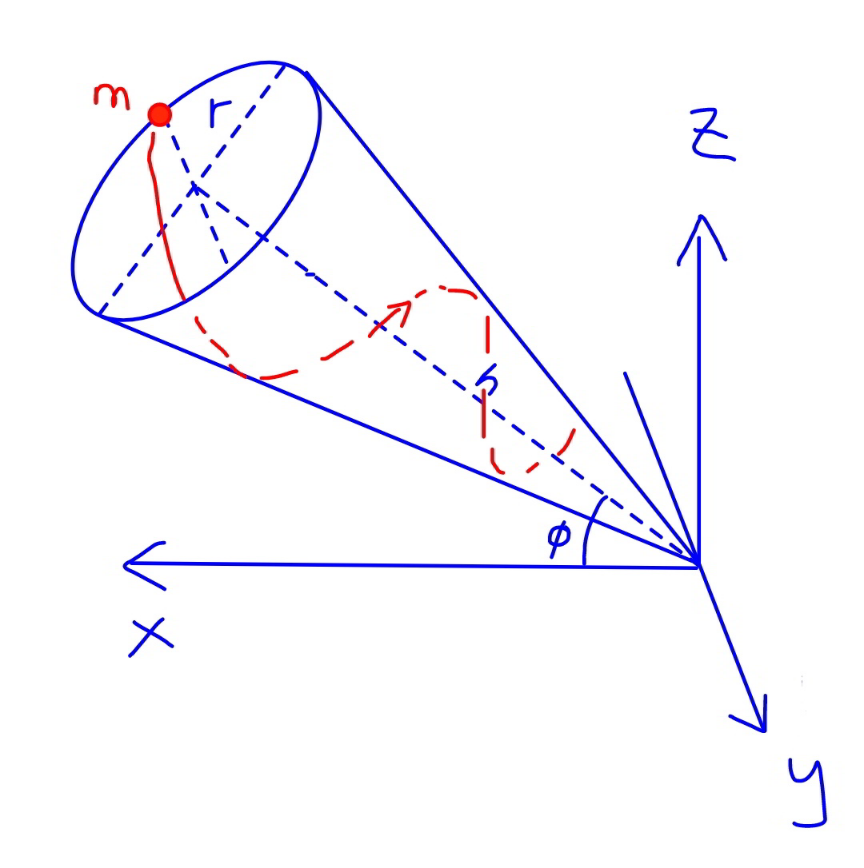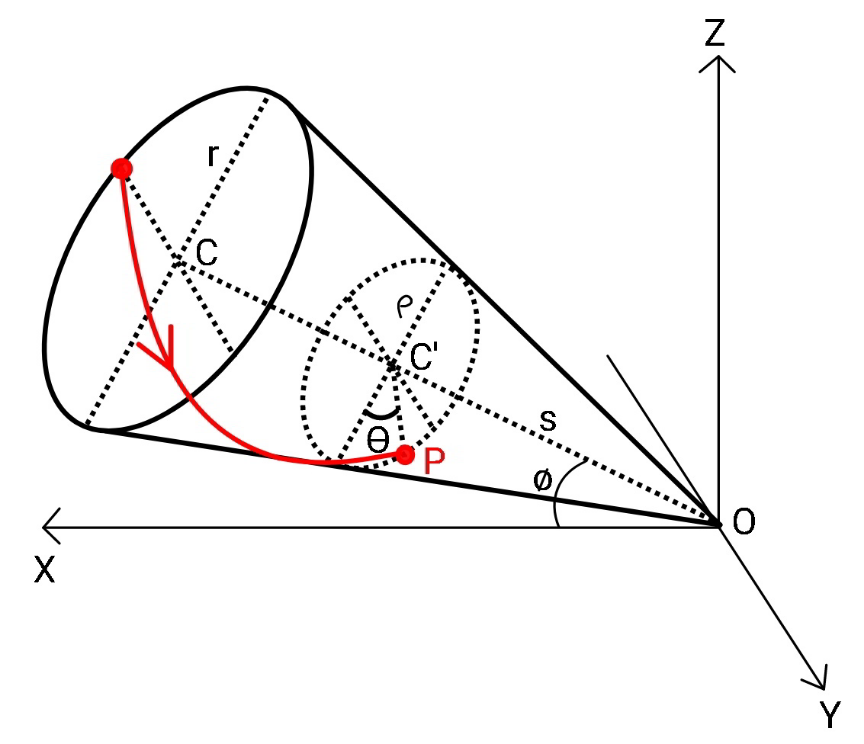
Question and Answers Forum
Question Number 138696 by mr W last updated on 16/Apr/21

Commented by mr W last updated on 16/Apr/21

Answered by mr W last updated on 18/Apr/21

Commented by ajfour last updated on 28/Apr/21
![Let a point on axis of cone be A(ρcos φ, 0, ρsin φ) eq. of plane normal to axis and through A is (r^� −iρcos φ−kρsin φ)∙(icos φ+ksin φ)=0 cos φ(x−ρcos φ)+sin φ(z−ρsin φ)=0 ⇒ xcos φ+zsin φ=ρ (x−ρcos φ)^2 +(y−ρsin φ)^2 +z^2 =r^2 x^2 +y^2 +z^2 =ρ^2 +r^2 let y=rcos θ, x=ρcos φ−rsin θsin φ z=ρsin φ+rsin θcos φ (r/ρ)=tan α=m=(R/h) a_s =((−gz)/( (√(ρ^2 +r^2 )))) a_s =((−(gcos α)z)/ρ) s=(ρ/(cos^2 α)) ds=dρ(1+m^2 ) ((v_s dv_s )/ds)=−(((gcos α)z)/ρ) v_s dv_s =−(((gcos α)(1+m^2 )zdρ)/ρ) (dx)cos φ+(dz)sin φ=dρ dx=(dρ)cos φ−(msin φ)d(ρsin θ) dρ−(dz)sin φ=(dρ)cos^2 φ −msin φcos φ[(dρ)sin θ+ρcos θdθ]](Q139533.png)
| ||
Question and Answers Forum | ||
Question Number 138696 by mr W last updated on 16/Apr/21 | ||
 | ||
Commented by mr W last updated on 16/Apr/21 | ||
 | ||
Answered by mr W last updated on 18/Apr/21 | ||
 | ||
Commented by ajfour last updated on 28/Apr/21 | ||
![Let a point on axis of cone be A(ρcos φ, 0, ρsin φ) eq. of plane normal to axis and through A is (r^� −iρcos φ−kρsin φ)∙(icos φ+ksin φ)=0 cos φ(x−ρcos φ)+sin φ(z−ρsin φ)=0 ⇒ xcos φ+zsin φ=ρ (x−ρcos φ)^2 +(y−ρsin φ)^2 +z^2 =r^2 x^2 +y^2 +z^2 =ρ^2 +r^2 let y=rcos θ, x=ρcos φ−rsin θsin φ z=ρsin φ+rsin θcos φ (r/ρ)=tan α=m=(R/h) a_s =((−gz)/( (√(ρ^2 +r^2 )))) a_s =((−(gcos α)z)/ρ) s=(ρ/(cos^2 α)) ds=dρ(1+m^2 ) ((v_s dv_s )/ds)=−(((gcos α)z)/ρ) v_s dv_s =−(((gcos α)(1+m^2 )zdρ)/ρ) (dx)cos φ+(dz)sin φ=dρ dx=(dρ)cos φ−(msin φ)d(ρsin θ) dρ−(dz)sin φ=(dρ)cos^2 φ −msin φcos φ[(dρ)sin θ+ρcos θdθ]](Q139533.png) | ||